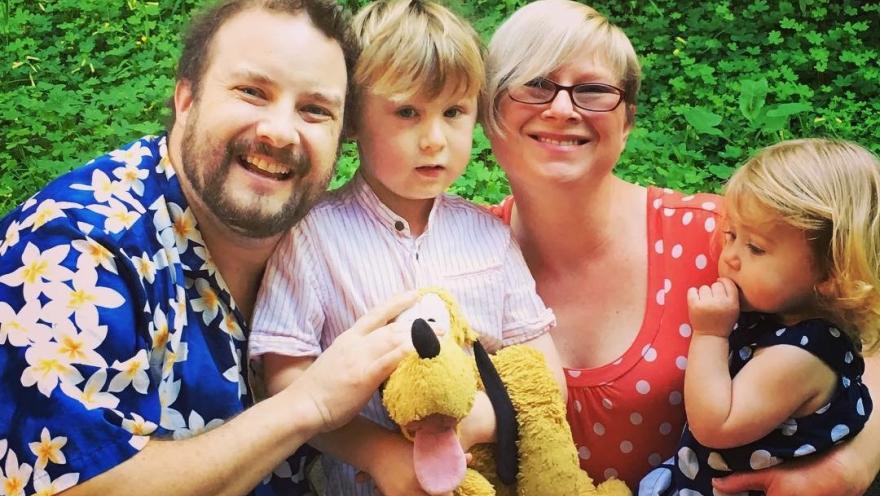Today, we are happy to feature Dr. Nicholas Olney, this year’s recipient of the prestigious Clinical Research Training Fellowship in ALS Research Award given in partnership with the American Academy of Neurology (AAN). Dr. Olney is currently working on an ALS biomarker project aimed at developing clinical markers of disease progression, a major unmet need in ALS, at the University of California at San Francisco (UCSF) School of Medicine under the mentorship of Drs. Howard Rosen, Cathy Lomen-Hoerth and Bruce Miller.
Receiving this award is particularly poignant for Dr. Olney. His father, Richard K. Olney, M.D., was an internationally respected neurologist and researcher, who founded the ALS Treatment and Research Center at the University of California, San Francisco (UCSF), an ALS Association Certified Center of Excellence and served on the Board of Directors for The ALS Association Golden West Chapter. Dr. Olney was himself diagnosed with ALS in 2004, the same disease he helped his patients fight for over 30 years, and lost his battle in 2012. That same year, The AAN and The Association launched the Clinician Scientist Development Award and named the award in his honor.
We sat down with Dr. Olney to learn more about his exciting research and to get to know the person behind the science.
What is your academic background and why did you get involved in ALS research?
I did a double major at University of California San Diego. I obtained a BA in theatre and BS in biochemistry. I then worked in San Diego biotech but moved home to take care of my father, Richard K. Olney, when he was diagnosed with ALS. I applied to medical school planning to participate in ALS research. I was lucky enough to get into UCSF and remain close to my family. I took an extra year in medical school and researched a common symptom of ALS called pseudobulbar affect (uncontrolled laughing and crying). This was an exciting year since I was working with the UCSF ALS center, the UCSF Memory and Aging Center (MAC) and the UC Berkeley emotions laboratory. I did my medical internship at Highland Hospital in Oakland, Calif. My neurology residency was done at UCLA. I returned to UCSF for my fellowship at the MAC to specifically study neurodegenerative diseases and continue to work with the UCSF ALS center. During my time as a fellow, I was interested in projects related to ALS and early disease detection.
Who is your hero?
My dad continues to be my hero. As a patient with ALS, he tried to make the most of each day and spend as much time outdoors in the California sun as possible. We would often plan and look forward to monthly trips to live music concerts. As I transitioned from caregiver into medicine and then into neurology, I have been able to learn the impact my dad had a as clinician and researcher in the ALS patient community. My dad continues to inspire me.
In layman’s terms please describe your funded project. What is the overall impact of your research on the ALS field and how can it lead to potential ALS treatments?
My project will be using a new magnetic resonance imaging (MRI) technique that provides a unique way to look at the gray and white of the spinal cord. We are looking for a pattern within ALS spinal cords that may be associated with specific symptoms and could help aid in early diagnosis, especially in areas where the electromyography (EMG) (i.e. needle test) may be more difficult. We are currently working to prove that this technique shows a difference between an ALS spinal cord and a normal spinal cord and are recruiting people with ALS who can lie down flat and tolerate an MRI. Once this is proven, we plan to look at people with early ALS and gene carriers that are at risk for ALS. We will also be exploring a new blood biomarker, called neurofilament, to see if this can help predict severity of disease. If proven, this technique could be used in clinical trials to gauge effectiveness of ALS treatments. One of the ultimate goals of biomarkers is to identify the disease as early as possible, so treatments can be employed as early as possible to stop disease progression.
What has the support from The ALS Association meant to you and how will your Clinical Research Fellowship push your project forward?
The ALS Association Golden West Chapter was a great resource when I was a caregiver to connect with other family members dealing with similar issues and people with ALS. I have continued to enjoy participating in ALS Advocacy Day in Washington D.C. and the Napa Valley Ride Defeat ALS and Walk.
I am honored to have received the Clinical Research Training Fellowship from The ALS Association and AAN. This will give me protected time to further my research in trying to discover ALS biomarkers.
What do you do for fun?
I enjoy spending time with my family, coaching soccer, going to live music events and collecting vinyl records.
Learn more about biomarkers HERE.
Read press release HERE.


Join the conversation. Please comment below.